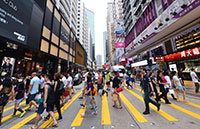Heavily polluted city to publish PM2.5 data
(Xinhua) Updated: 2012-11-25 19:04LANZHOU - Readings of PM (particular matter) 2.5 in the city of Lanzhou, one of China's most polluted, will be available for public scrutiny in December, according to officials.
The capital city of Gansu province will conduct the PM2.5 monitor according to new environmental air quality standards on December 1.
Lanzhou is among the first batch of 74 Chinese cities required by the Ministry of Environmental Protection to publish daily reports on PM2.5 by the end of the year.
The PM2.5 index is considered stricter than the PM10 standard previously adopted in China. It measures airborne particles smaller than 2.5 micrometers, which are more hazardous to people's heath.
The data will be updated on government websites and via television and radio before the end of the year, the head of Lanzhou Environmental Protection Bureau, Pan En, told Xinhua.
The move was hailed by local residents who have complained of air pollution in the northwestern city.
"What matters is not the reading itself, but that its publication can at least put pressure on officials to do something to alleviate the pollution," said Pan Jiang, a local citizen.
The 74 cities include China's four municipalities, 27 provincial capitals, as well as cities in three highly urbanized and industrialized regions - Yangtze River Delta in the east, Pearl River Delta in the south and the northern Beijing-Tianjin-Hebei area.
With wealthy coastal cities like Shanghai, Guangzhou and Nanjing having launched their PM2.5 readings, less developed inland cities like Lanzhou are faced with obstacles in the enforcement of the new air quality standards.
Experts said on top of terrain and climate factors, Lanzhou's reliance on petrochemical industries and its winter heating have made the city's air pollution worse.
A popular joke in Lanzhou said the air pollution has made the day dark as night and dyed the sparrows to the color of ravens.
In a World Health Organization (WHO) survey, published in 2011, the city was named China's worst for air pollution.
Officials said the decision to publicize PM 2.5 data came after the city launched a campaign to tackle air pollution involving 70 billion yuan ($11.2 billion) of investment.
The campaign has seen 363 coal-fired boilers updated to use cleaner gas as fuels, while 130 heavy-polluting factories are required to move out of the city proper within three years.
- What you need to know about Jiangsu's deadly tornado
- China faces challenges in tornado forecast: weather authority
- Ruling may 'open Pandora's box'
- Poverty funds facing stiffer supervision
- Guns a growing factor in narcotics enforcement
- China issues disaster alerts
- Ministry orders removal of substandard running tracks
- HK most expensive for expats
- Agency lists tiny hallway for sale: 1.5 million yuan
- Li vows to boost support for real economy










